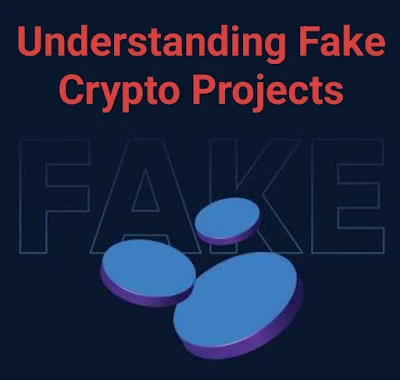Understanding Fake Crypto Projects
Understanding Fake Crypto Projects
They often use clever marketing tactics to create a sense of urgency and FOMO (fear of missing out) among potential investors. These tactics aim to pressure individuals into investing before thoroughly researching the project and its legitimacy.
One common type of fake crypto project is the exit scam. In this scheme, the creators of the project will raise funds from investors, build some hype around their project, and then suddenly disappear with the raised funds, leaving investors with worthless tokens. These scams can be devastating for those who invested their hard-earned money.
Another type of fake project involves creating a token or coin that has no real utility or value. They may claim to offer innovative technologies or solutions, but in reality, they have nothing substantial to offer. These projects rely on attracting investors solely based on promises of high returns.
To protect yourself from falling victim to fake crypto projects, you should conduct thorough research before investing in any project. Here are some steps you can take:
1. Verify the team:
Look for information about the project's team members on their official website, LinkedIn, or other reputable sources. Check if they have relevant experience and a track record in the crypto industry. Be wary if the team's information is incomplete or if they use stock photos instead of real team members.
2. Analyze the whitepaper and roadmap:
Read the project's whitepaper and roadmap carefully. Look for technical details, a clear roadmap, and a well-defined problem that the project aims to solve. Assess the feasibility and practicality of the project's goals. Additionally, beware of projects that have a poorly written or vague whitepaper.
3. Check for partnerships and collaborations:
Genuine crypto projects often form partnerships with other reputable companies or organizations. Research these partnerships to ensure they are legitimate and not fabricated for deceptive purposes.
4. Assess community involvement:
Look for an active and engaged community around the project. Check social media platforms, forums, and discussion groups to gauge the level of community participation. Lack of active community engagement can be a red flag.
5. Examine the project's code and technology:
If the project offers open-source code or has a public repository, review it to assess the quality of the code and whether it aligns with the project's claims. If the project lacks transparency or refuses to share their code, it raises suspicions.
6. Conduct due diligence on the project's claims:
Cross-verify the project's claims and promises with objective sources. Be cautious of projects that make unrealistic or wildly exaggerated claims about their potential profits or technological breakthroughs.
7. Seek expert opinions:
Consult with experienced individuals or seek advice from trusted sources who have knowledge of the crypto space. They may be able to provide insights or spot red flags that you may have missed.
8. Evaluate the project's communication and transparency:
Assess how the project communicates with its community and investors. Genuine projects often provide regular updates, respond to inquiries promptly, and are transparent about their progress, challenges, and milestones. If a project lacks transparency or avoids answering important questions, it's a warning sign.
9. Study the token economics:
Understand the token economics and how the project plans to create and distribute its tokens. Look for clear information on the token supply, distribution, and any mechanisms in place to prevent token manipulation or inflation. Be cautious if the project's token distribution seems unfair or if there are plans for a significant number of tokens to be held by the project team.
10. Research the project's history and reputation:
Look for any previous controversies, scams, or complaints associated with the project or its team members. Check crypto news outlets and online forums for any negative reviews or warnings about the project. Reputation matters, and a project with a tainted history should be approached with extreme caution.
11. Utilize online resources and tools:
Various online platforms and tools can help you assess the credibility and legitimacy of a blockchain project. Websites like CoinMarketCap, CoinGecko, or TokenInsight provide valuable information about a project's market performance, token distribution, and team details. Additionally, online forums and communities like Reddit and Bitcointalk can provide insights and discussions about a project's legitimacy.
12. Trust your instincts:
Finally, trust your gut feeling. If something doesn't feel right, it's better to err on the side of caution. Crypto investments are highly risky, and it's crucial to listen to your intuition and avoid getting caught up in the hype surrounding a project.
Consulcion:
No investment is entirely risk-free, especially in the volatile crypto market. Always invest what you can afford to lose and diversify your portfolio. By conducting extensive research, remaining vigilant, and exercising caution, you can reduce the chances of falling victim to fake crypto projects.
Remember, it's essential to be skeptical and exercise caution when investing in any crypto project. If something seems too good to be true, it probably is. Always prioritize thorough research and due diligence to protect yourself from falling victim to fake crypto projects.
Tag:
How do you know if a crypto project is legitimate?
How do you identify deceptive crypto projects?
What are the red flags for crypto projects?
How do you know if a crypto project is good?
How do I identify a new crypto project?
Can I get my money back if I got scammed from Bitcoin?

Post a Comment for "Understanding Fake Crypto Projects"